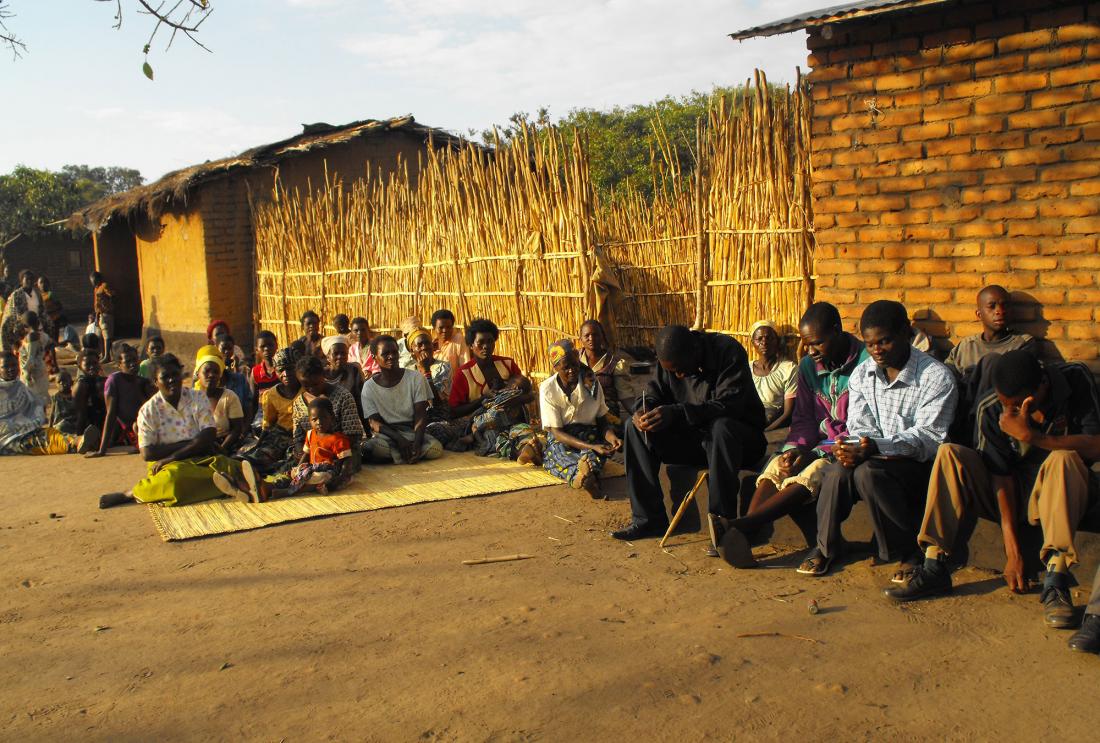Insurance, Credit and Technology Adoption in Malawi
- Farmers
- Technology adoption
- Fertilizer and agricultural inputs
- Insurance
Risk and uncertainty can lead to low levels of agricultural technology adoption, particularly where resources to help farmers deal with risk are not available. In Malawi, researchers examined the effect of bundling rainfall index insurance with a credit program on farmers’ demand for credit. They found that bundling insurance with credit reduced the demand for credit, from 33 percent for credit alone to 17.6 percent for the bundled product.
Problema de política pública
The classic economic view of poor farmers is that their lack of a savings cushion causes them to prefer agricultural approaches with more reliable, but lower, average returns. Farmers may see adoption of new technologies as risky, especially early in the adoption process when proper use and average yields are not well-understood. Weather and environmental factors can also pose significant risks. Insurance may help farmers cope with risks and adopt new agricultural technologies, but these products are unfamiliar to many farmers in the developing world, making them unlikely to purchase them. However, insurance may be more appealing to farmers if bundled with another financial product: credit. Will farmers purchase a financial product that combines credit with insurance against poor rainfall?
Contexto de la evaluación
Nearly all Malawian households (97 percent in 2004-2005) are engaged in maize production, but only 58 percent use hybrid maize varieties. Hybrid maize adoption in Malawi has lagged behind adoption in Kenya, Zambia, and Zimbabwe. Aversion to risk, credit constraints and limited access to information are among the most cited reasons why hybrid seeds and other technologies have failed to take hold in Malawi. Within Malawi, varying rainfall risk is by far the dominant source of production risk in Malawi, followed by pests.

Detalles de la intervención
Researchers conducted a randomized field experiment to determine whether bundling rainfall insurance with a loan intended to finance adoption of a new crop technology increased demand for credit. Researchers randomly selected 16 localities in central Malawi where farmers were offered credit to purchase high-yielding hybrid maize and groundnut seeds for planting in the November 2006 crop season. In another 16 localities, farmers were offered a similar credit package, but if taking the loan were also required to purchase (at actuarially fair rates) a weather insurance policy that partially or fully forgave the loan in the event of poor rainfall.
The microfinance institutions Opportunity International Bank of Malawi (OIBM) and Malawi Rural Finance Corporation (MRFC) offered loans for the hybrid seeds based on group liability contracts for clubs of 10-20 farmers. Take-up of the loan was an individual decision, but the subset of farmers who took up the loan were told that they were jointly liable for each others’ loans.
The weather insurance policy was customized to each of the four project regions (Lilongwe North, Kasungu, Nkhotakota, and Mchinji). Payouts were based on the rainfall readings at the closest weather station to the individual in question, and premiums were lower in places where the likelihood of a bad rainfall shock was lower. Compared with the annual interest for the uninsured loan (27.5 percent), a farmer taking out an insured groundnut loan faced an effective interest rate ranging from 37.8 percent to 44.4 percent, depending on the area.
All farmers in the study were administered a household survey that covered income, education, assets, income-generating activities (including detailed information on crop production and crop choice), measures of risk aversion, and knowledge about financial products such as credit and insurance.
Resultados y lecciones de la política pública
Loan Take-Up: Take-up was 33 percent among farmers who were offered the basic loan without insurance. Take up was lower, at only 17.6 percent, among farmers whose loans were insured against poor rainfall. A potential explanation is that farmers already were implicitly insured by the limited liability inherent in the loan contract, so that bundling the loan with formal insurance (and charging a premium) effectively increased the interest rate on the loan.
It is also possible that farmers may have been uncertain about the risks associated with the hybrid seeds. For those in the treatment group, the fact that they were offered insurance may have served as a signal that the seeds were a risky investment. Lower take-up of the credit plus insurance product would then be a rational response.
Wealthier and more educated farmers were more likely to take up the insured loan. By contrast, there was no indication that farmer education, income, or wealth was related to loan take-up in the uninsured loan group.
Following the study, one of the partners decided to offer only insured loans, but borrowers generally do not know that the loans are backed by rainfall insurance. This makes the loans less risky for the microfinance institution, but if farmers do not know they are insured, insurance cannot drive them to invest in riskier crops or more inputs.



